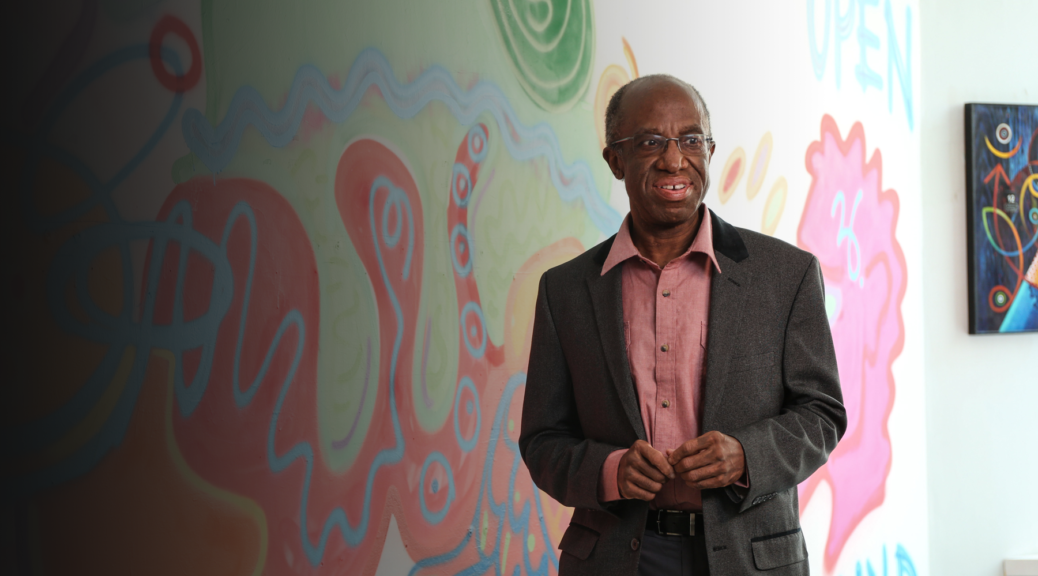
Firsts: Overlooked composer, a bridge-crossing conductor
It was a grand night to remember. An unprecedented new breeze blew into Davies Hall and inspired an audience moved to its feet, clapping with vigor.
The salient firsts for the S.F. Symphony were the jovial conductor Michael Morgan on the podium and music by the greatly underrated composer Louise Dumont Farrenc. By the time it was over, folks virtually forgot just which brilliant Rossini overture had opened the program.
The debut of Morgan resulted in far greater audience representation of the black community (though the scarcity of black musicians in the ensemble was, as usual, striking). The sixtyish Morgan had won his spurs as the No. 2 in the Chicago Symphony before his ongoing tenure since 1991 at the Oakland Symphony, an orchestra which, if memory serves, has never before in history seen its music director invited to an SFS podium.
Morgan’s centerpiece was a sterling work by the obscure 19th-century Frenchwoman Farrenc (rhymes with trunk), an astonishing figure who avoided similarities to more fashionable French composers like Saint-Saens, Franck and Meyerbeer, Halevy and Berlioz. Instead she hewed to a contrarian (and controversial, back then) German style—inspired by Beethovenian outbursts, but more closely tied to the sound textures of Mendelssohn. Even the harps, near-mandatory in French symphonies, were given the night off.
Farrenc (1804-75) was a Parisian and Conservatory professor as well as concert pianist. Her music even got grudging left-handed compliments from Berlioz. As a woman composer, she was shunted aside and ill-treated. But, as Morgan told his audience July 23, in the end, “She demanded equal pay, and she got it!”
Call her suppressed by males, call her ignored, Farrenc plowed on diligently, producing her Symphony No. 3 in G Minor in 1847. The 38-minute work sets off with a tentative Adagio, then launches into the stormy Allegro, with surprise “thunderbolts,” achieving it without brass (apart from two horns), turning the string players into workhorses propelling this compelling flagship opus.
Her skill was particularly evident in the exquisite woodwind chorales garlanding the symphony, along with the deft violin sound. After the serenity of the slow movement came the finale, an unsettled, angry mood in minor with sharp strokes, drama and discontent. The work is a revelation, one that others need to perform in these Me-Too days to show off one of the admirable female pioneers in classical music.
The dancing craze and the hit song of the 1920s was the “Charleston,” by James B. Johnson (like Morgan himself, a black artist). The dance with origins among blacks on our Southeast Coast has been traced back even farther with similarities to an Algerian mating dance. Whatever, whichever, this performance all but ripped the roof off Davies Hall, with extravagant uninhibited jazz riffs via solos from Mark Inouye, trumpet; Nick Platoff, trombone; Jerome Simas, clarinet; and John Wilson, piano. Who’d have thought these classicists to have so much blues melisma and wah-wah slides in them?
Many in the audience would have jumped spontaneously into the aisles to dance, but ushers would surely have separated them with social-distancing mandates. A rare standing ovation by everybody I could see ensued. If there were bravos, they were muffled by the masks worn by all the patrons.
Festivities opened with Rossini’s “Thieving Magpie” Overture, wherein the percussion and brass made their presence known in no uncertain terms.
MUSIC NOTES—Conductor Morgan explained that the Charleston had been the dance that epitomized the Roaring Twenties. “We’re hoping for another Roaring Twenties, but without the crash at the end….” The spring-summer SFS programs have grown from 65 to 80 minutes, almost up to a regular in-season length.
San Francisco Symphony, Michael Morgan guest conductor, in Rossini, Farrenc, Johnson, July 23 Davies Hall, repeated the next night at Frost Amphitheater, Stanford Univ. No intermission. For SFS details: (415) 864-6000, or go online: www.sfsymphony.org.